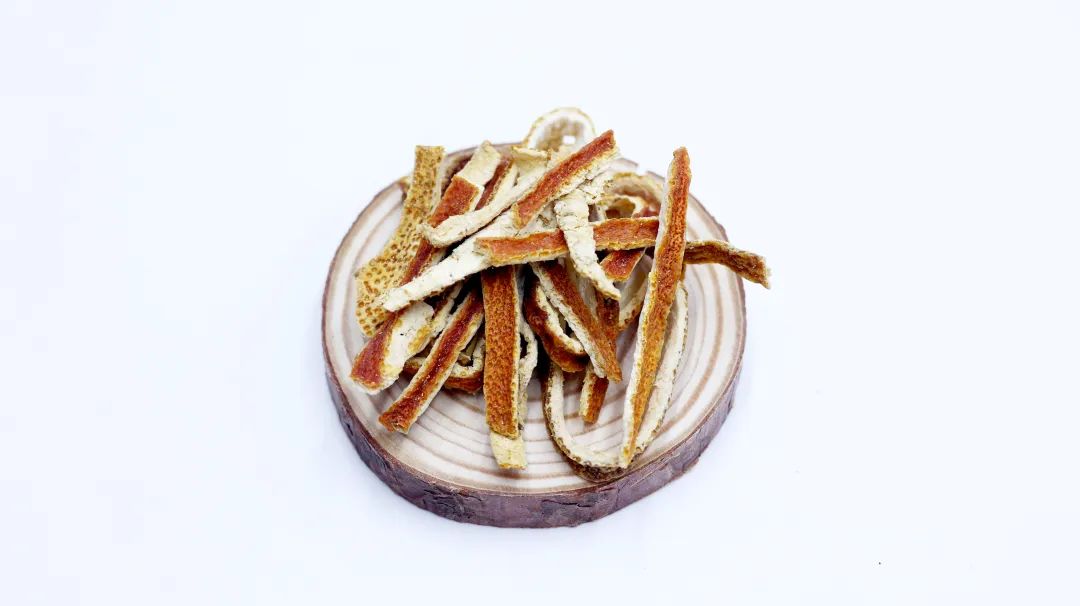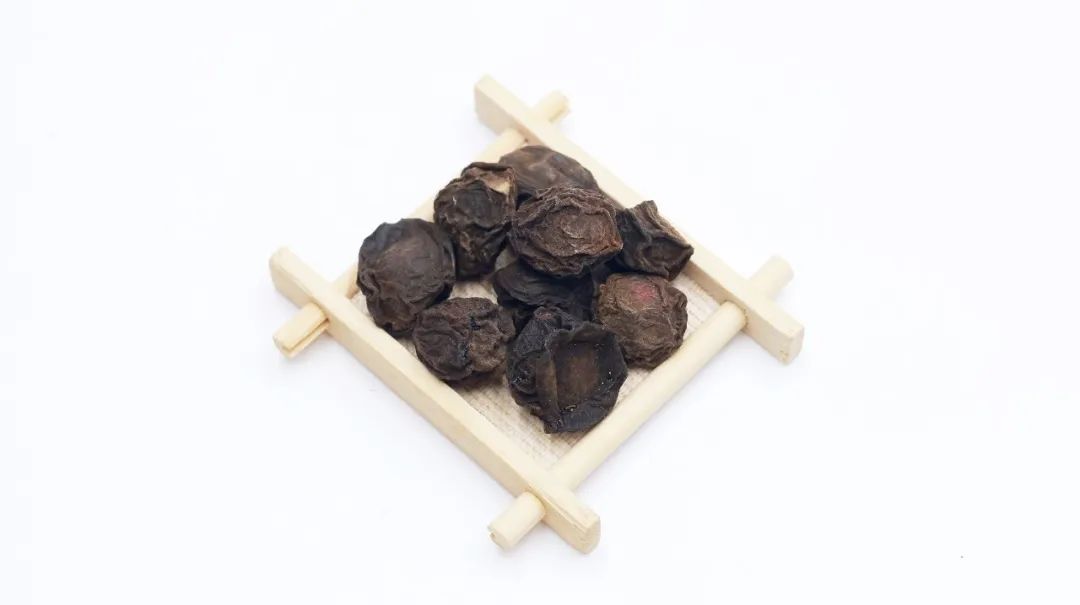
As the saying goes, “Many diseases are caused by phlegm” and “Dampness is the source of all diseases“. Therefore, eliminating phlegm and dampness is particularly important. In daily life, there are indeed many people troubled by phlegm and dampness. Even minor ailments can become persistent and difficult to cure for those affected by phlegm and dampness, dampening their spirits. While it may not be a severe issue, it can certainly be quite unpleasant!
So, is there a good TCM remedy for this troublesome phlegm and dampness? Certainly, there are many TCM formulas that address phlegm and dampness, but the most famous one comes from the Song Dynasty’s “Tai Ping Hui Min He Ji Ju Fang”, which is a remarkable formula known for its few ingredients and excellent efficacy. This classic formula for drying dampness and resolving phlegm is Er Chen Tang (Er Chen Decoction).
The composition of Er Chen Tang is quite simple; it can be considered a formula of four herbs, but it can also be seen as one of six herbs. According to the original text, Er Chen Tang consists of Ban Xia (Pinellia ternata, washed seven times), Chen Pi (tangerine peel), Bai Fu Ling (white poria), and Gan Cao (licorice, roasted), among others. The specific preparation method involves crushing these herbs into a powder. For each dose, take four qian (approximately 12 grams) of the powdered herbs, add one sheng (approximately 240 ml) of water, along with seven slices of fresh ginger and one Wu Mei (black plum), and decoct until reduced to six parts, then strain and take warm.

In the Song Dynasty, it was common to prepare the formula as a powder, so while the total amount of the formula may seem large, the actual single dose is not. The modern general dosage is: Ban Xia and Chen Pi (the original formula uses Chen Pi, but later practitioners often use Chen Pi instead) each 15g, Bai Fu Ling 9g, Gan Cao 4.5g, fresh ginger 7 slices, Wu Mei 1 piece, and water for decoction. Here, Ban Xia should be decocted for one hour first, then combined with the other herbs and decocted for an additional 20-30 minutes, strain out the dregs, and take 100-150 ml per dose, three times a day.
Upon seeing the composition of Er Chen Tang, you might find it reminiscent of Liu Jun Zi Tang (Six Gentlemen Decoction). In fact, Liu Jun Zi Tang is a combination of Si Jun Zi Tang (Four Gentlemen Decoction) and Er Chen Tang. So, what is the secret behind the compatibility of the herbs in Er Chen Tang? First, let’s look at its monarch, minister, assistant, and envoy herbs. Er Chen Tang uses Ban Xia as the monarch herb, primarily functioning to dry dampness, resolve phlegm, and harmonize the stomach while descending rebellious qi; Chen Pi (or Chen Pi) as the minister herb, mainly functioning to regulate qi, relieve stagnation, and dry dampness; Bai Fu Ling, fresh ginger, and Wu Mei as assistant herbs, primarily functioning to strengthen the spleen, drain dampness, descend rebellious qi, stop vomiting, and protect the stomach yin; and Gan Cao as the envoy herb, mainly functioning to resolve phlegm, harmonize the formula, and moderate the properties of the other herbs.
Within these few herbs, there are even more aspects worth pondering. The first is the combination of Ban Xia and Chen Pi (or Chen Pi), which are used in equal amounts and complement each other, enhancing the overall ability to dry dampness and resolve phlegm, reflecting the principle that “to treat phlegm, one must first regulate qi; when qi flows smoothly, phlegm dissipates“. Moreover, Ban Xia and Chen Pi are among the “Six Chen Herbs”, which improve in efficacy the longer they are stored, which is also the origin of the name “Er Chen”. The second is the combination of Bai Fu Ling and Chen Pi (or Chen Pi), which is specifically tailored to address “phlegm due to qi stagnation” and “the source of phlegm production“. This combination is designed to predict and intercept the progression of disease. This is a high-level operation, as described in the Huang Di Nei Jing (Yellow Emperor’s Inner Canon) as “treating diseases before they occur” and in the Jin Gui Yao Lue (Essential Prescriptions of the Golden Cabinet) as “recognizing liver disease and knowing it transmits to the spleen”.

Thirdly, the use of fresh ginger is noteworthy. As the saying goes, “If it’s not for Hou Po and Ban Xia, why would you need ginger to control it?” Therefore, fresh ginger in Er Chen Tang mainly assists Gan Cao in moderating the toxicity of Ban Xia. Not only that, it also works synergistically with Ban Xia to resolve phlegm, descend rebellious qi, and harmonize the stomach to stop vomiting. Fourthly, Wu Mei is the finishing touch of the entire formula. Why is Wu Mei added? Because Wu Mei can gather lung qi and protect stomach yin, while also working with Ban Xia and Chen Pi to mitigate the adverse effects of “drying and dispersing”.
The complete version of Er Chen Tang consists of six herbs; removing fresh ginger and Wu Mei results in a “deficient” Er Chen Tang. The six herbs in Er Chen Tang are comprehensive, addressing both symptoms and root causes, treating existing diseases as well as preventing future ones. It can “dry dampness, regulate qi, and eliminate phlegm that has already formed” for treating existing diseases, while it “strengthens the spleen, drains dampness, and prevents the source of phlegm production” for preventing future diseases. It is truly a remarkable formula, and when used properly, Er Chen Tang can effectively address many difficult and complicated conditions in clinical practice.
Er Chen Tang primarily focuses on drying dampness and resolving phlegm. Can it also sweep away various types of phlegm? Er Chen Tang says, “Absolutely“. To sweep away various types of phlegm, adjustments and modifications are necessary. As the saying goes, “If you love me, double it; if you encounter a clinical case, add flavors“. For example, to eliminate damp phlegm, one should add herbs like Cang Zhu (Atractylodes) and Hou Po (Magnolia bark); to eliminate heat phlegm, one should add Dan Nan Xing (Arisaema) and Quan Gua Lou (Trichosanthes fruit); to eliminate cold phlegm, one should add Gan Jiang (dried ginger) and Xi Xin (Asarum); to eliminate wind phlegm, one should add Tian Ma (Gastrodia) and Jiang Can (silkworm); to eliminate food phlegm, one should add Lai Fu Zi (radish seed) and Bai Jie Zi (white mustard seed); to eliminate stagnant phlegm, one should add Xiang Fu Zi (Cyperus) and Yu Jin (Curcuma); to eliminate scrofula and phlegm nodules, one should add Hai Zao (Sargassum), Kun Bu (Kelp), Zhe Bei Mu (Fritillaria), and Mu Li (Oyster). It can be said, “No matter what type of phlegm you have, Er Chen is here to help“.

Er Chen Tang was originally used to treat “phlegm-damp” diseases, clinically appearing as symptoms like nausea and vomiting, dizziness and palpitations, discomfort in the stomach, and disharmony of the spleen and stomach. However, when using Er Chen Tang in modern practice, there is a key diagnostic point: the main symptoms are cough with copious white phlegm that is easy to expectorate, heaviness in the limbs, chest oppression, and nausea and vomiting, with or without “dizziness and palpitations”. Of course, the effects of Er Chen Tang extend far beyond these symptoms. Later practitioners have expanded its use to treat various conditions such as cough, asthma, insomnia, stroke, phlegm vertigo, dizziness, epilepsy, scrofula, stagnation, stomach pain, irregular menstruation, and leukorrhea. In modern clinical practice, Er Chen Tang is effectively used to treat gastritis, gastric and duodenal ulcers, neurogenic vomiting, pregnancy-related vomiting, colds, bronchitis, emphysema, inner ear vertigo, cerebrovascular accidents, thyroid enlargement, epilepsy, and hernias, all of which are disorders caused by spleen dampness leading to phlegm and obstructing qi flow, achieving satisfactory results.[1]
With the successful application of Er Chen Tang in modern clinical practice, pharmacological studies have also been conducted. These studies suggest that Er Chen Tang has pharmacological effects such as lowering blood lipids, anti-tumor effects, lowering blood sugar, regulating fatty liver, and suppressing cough and resolving phlegm.[2]
Er Chen Tang and its modified formulas are increasingly widely used in various modern medical fields, including respiratory, digestive, neurological, gynecological, and otolaryngological diseases. The range of diseases involved is extensive, including asthma, bronchitis, vomiting, amenorrhea, epilepsy, acne, oral mucous cysts, chronic bronchitis, chronic obstructive pulmonary disease, pneumonia, non-small cell lung cancer, non-infectious diarrhea in children, non-alcoholic fatty liver, secretory otitis media, post-nasal drip syndrome, tinnitus, vertigo, migraine, and insomnia.[4]
It is evident that Er Chen Tang is a “nemesis” for phlegm and dampness. Whether it is phlegm produced by spleen dampness, obstructed qi flow, or other accumulations of damp phlegm, Er Chen Tang can be used with modifications for treatment. People know that “phlegm and dampness cause a hundred diseases“, but it can also be said that “when phlegm and dampness are eliminated, a hundred diseases disappear“. The role of Er Chen Tang in this process is truly remarkable. However, due to the drying nature of Er Chen Tang, caution should be exercised in cases of dry phlegm, or additional herbs that clear dryness and resolve phlegm should be added. Additionally, those with symptoms of vomiting blood, thirst, yin deficiency, or blood deficiency should avoid using Er Chen Tang.
References
[1] He Lun, Dun Bao Sheng. Differentiation and Application of Er Chen Tang and Its Variants [J]. Shaanxi Journal of Traditional Chinese Medicine, 1985, 6(8): 376-377.
[2] Liao Hua Jun. Modern Pharmacological Research on Er Chen Tang [J]. Journal of Traditional Chinese Medicine, 2012, 40(5): 142-144.
[3] Chen Ni Ji Shi, Zhang Heng Liang, Li De Sen, et al. Overview of Literature and Clinical Research on Er Chen Tang [J]. Fujian Journal of Traditional Chinese Medicine, 2011, 42(2): 63-64.
[4] Yao Jin Tong, Ma Ying Ying. Progress in Clinical Application Research of Er Chen Tang [J]. World Latest Medical Information Abstracts, 2018, 18(68): 58-60.
[5] Liu Ci Bin, He Wei Qiang. Clinical Application and Research Progress of Er Chen Tang [J]. Today’s Pharmacy, 2020, 30(7): 501-504.Image and text source: Shen Xi Yuan
“Bookmark” us, let’s grow together
Click the bottom rightto see, click the top right【…】to share
is the best support for us
Related Statement
1. Health education is for reference only; if you feel unwell, seek medical attention promptly, and do not blindly try medications.
2. This platform encourages freedom of speech; selected comments do not represent the platform’s stance.
3. All images and texts are original or authorized works; please do not use without authorization.

